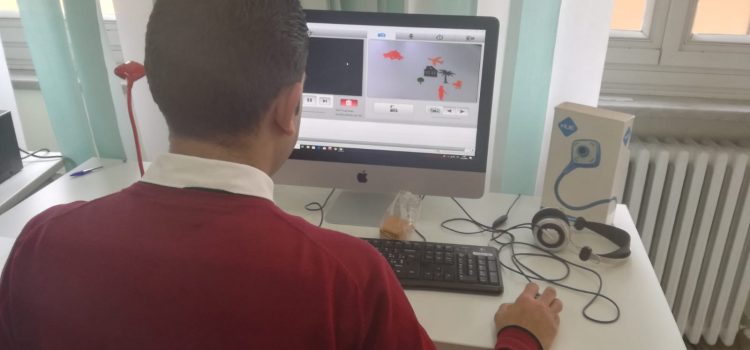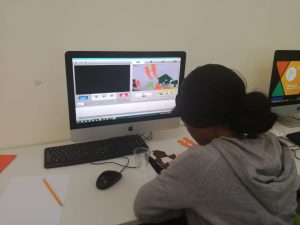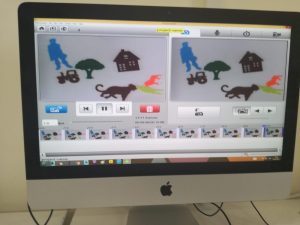
When hospitality becomes inclusion, learning is the most precious opportunity.
That’s exactly what happened to the Digital Welcome project’s participants during the Digital Storytelling module: using the technique of stop motion animation, the students told their stories – biographical or fantasy – going beyond the limits of words, often vehicles of prejudices and cultural barriers.

Sharing techniques and stories brought to nice exchanges of stories and anecdotes among the students: “As a child I used to play this game …”, “in my country instead it is like this …”.
Meanwhile, between one story and another, with the help of our trainer Federica, the students joined spontaneously the world of storytelling, free from the weight of the words’ grammar, with no right or wrong content to respond to.
They gave space to the imagination, and gradually they identified themselves with the spectator, learning to structure the story giving it a real message, with moving images and music.
During the lesson, Federica’s priority was to make them feel welcomed, smiling and listening to their experiences in a spontaneous way. In some cases these experiences were transformed into a video product. Some of the participants have told a specific event in their lives, others tried to give advices, contributing with examples from their own experience. There have been moments of emotional tension but also of laugh and fun.

The bravest video was the one created by C.: her story tells of a European citizen who goes to Africa, and returns to Europe with a lot of local precious goods, without asking permission. Then an African guy goes to Europe but, instead of a “welcome”, he finds borders and a really long process to obtain a residence permit.
The Digital Welcome project is rooted in this need, aiming to build and practice forms of reception and inclusion that allow people with a migratory background to feel welcomed and to access to the same opportunities for study and learning offered to their Italian peers.
Moreover, innovation and inclusion are an essential combination to face the challenge of integration. This is what, using innovative methods capable of including and giving opportunities, the Digital Welcome project aims to do.
<< Maybe they will no longer use the Stop Motion Animation, apart from some enthusiasts who – who knows – could turn it into a profession, but they will be able to use technology to create bridges between people, places and cultures >> Federica says with satisfaction.
